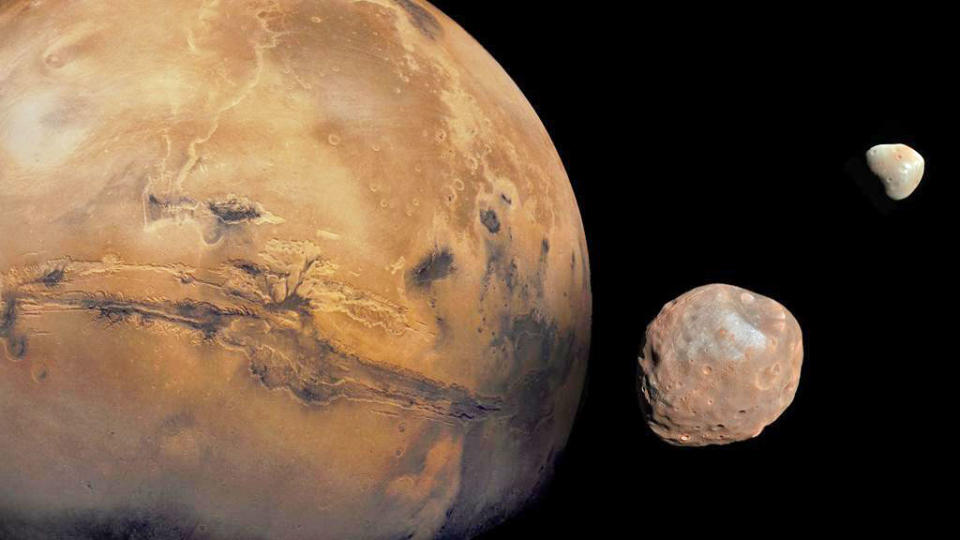One single theory may have solved three Mars mysteries
A giant asteroid impact could have caused Mars’ distinct geology, its moons and its strange composition.
We still aren't quite sure how Mars formed; there are many questions about its distinct geology and weird (but lovable) potato moons that don't really make sense. But now, a study in the journal Geophysical Research Letters may have solved some of the enduring mysteries of the red planet.
Mars has hemispheres that are geologically different from one another (smooth in the north, cratered in the south) and a composition that's different from Earth's. Additionally, the afore mentioned potato moons add to its mystery. Researchers Stephen Mojzsis and Ramon Brasser discovered that it was possible to have just one explanation for all three phenomena: a giant asteroid collision.
After the planets first formed, a lot of leftover debris was floating around the early solar system. These asteroids slammed into the planets as they were settling, violently bombarding and reshifting planetary compositions. The "giant impact" model theorizes that the rocky inner planets were initially smaller than they are now; asteroid impacts added to their masses as they absorbed the elements within this space debris and reformed themselves.
The researchers took a close look at Martian meteorites and realized that the composition of metals within its mantle could have come from one large asteroid impact. They calculated the size of the asteroid needed to deliver these metals found using Mars impact simulations. The final result: An asteroid the size of Ceres, roughly 1,200 km (745 miles) wide, may have impacted the planet around 4.43 billion years ago. Mars was likely subjected to smaller impacts afterwards.
The asteroid hit the northern hemisphere of Mars, which would explain the fact that the area's crust is younger than that of other Martian areas, and ejected enough material from the surface to create a planetary ring. This could possibly have resulted in the formation of Mars' two moons, Phobos and Deimos, which would also explain their composition: These bodies are made of both Martian and non-Martian elements.
We still don't know anything for sure (such is space science), but the fact that this one theory solves multiple mysteries of Mars' origins and geological features lends weight to it. The researchers hope to add further credence to their theory by studying more Martian meteorites and understanding how asteroids affected our solar system's formation.



